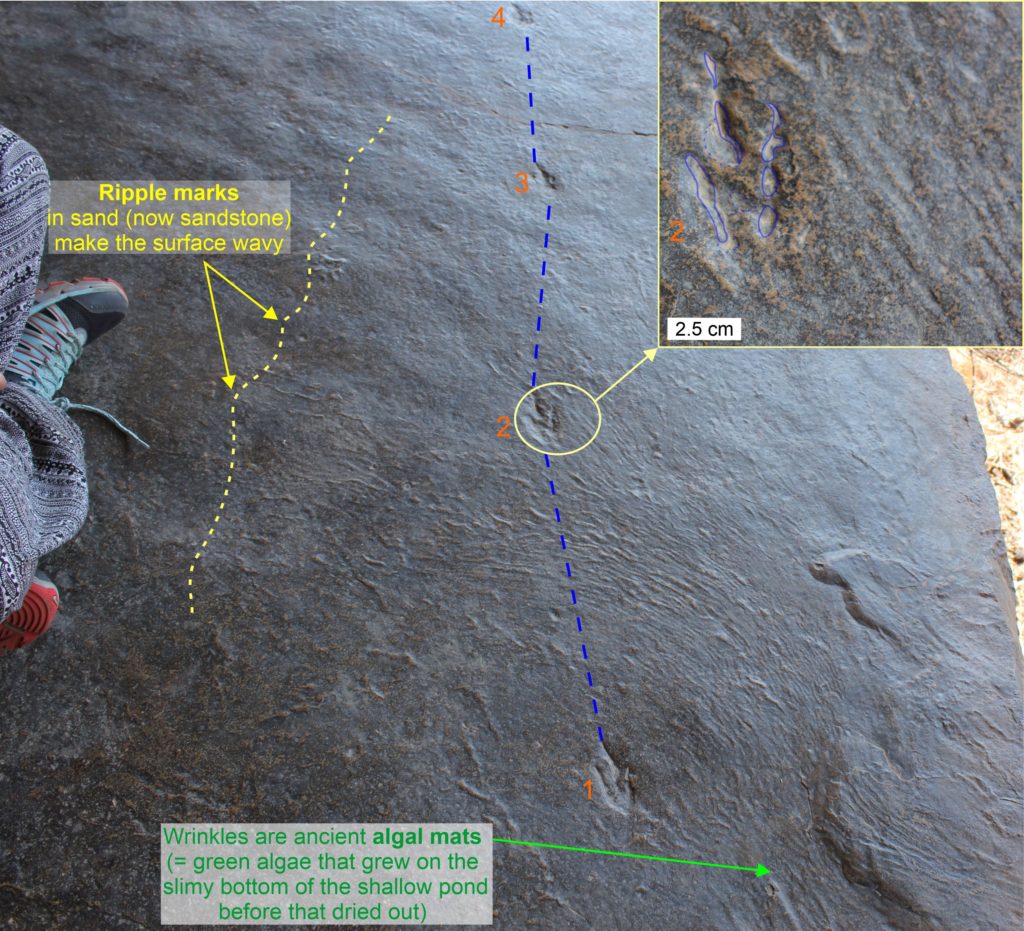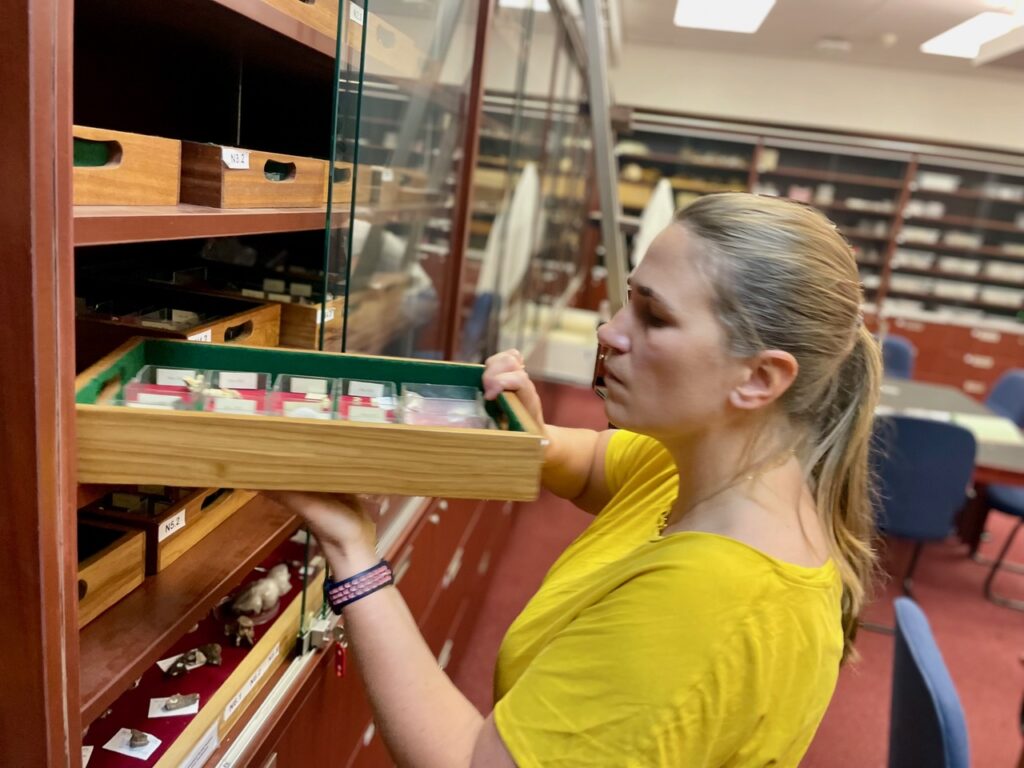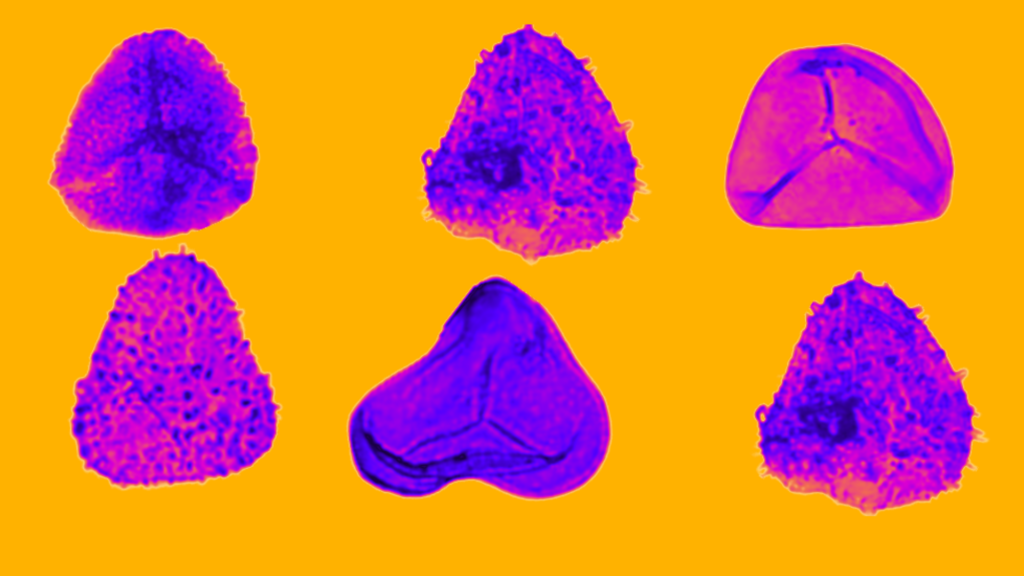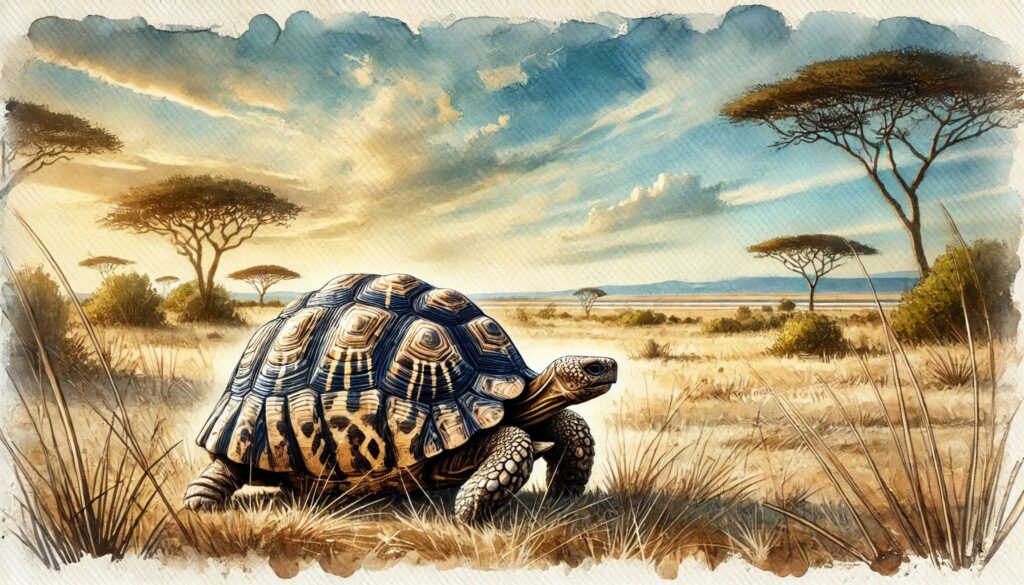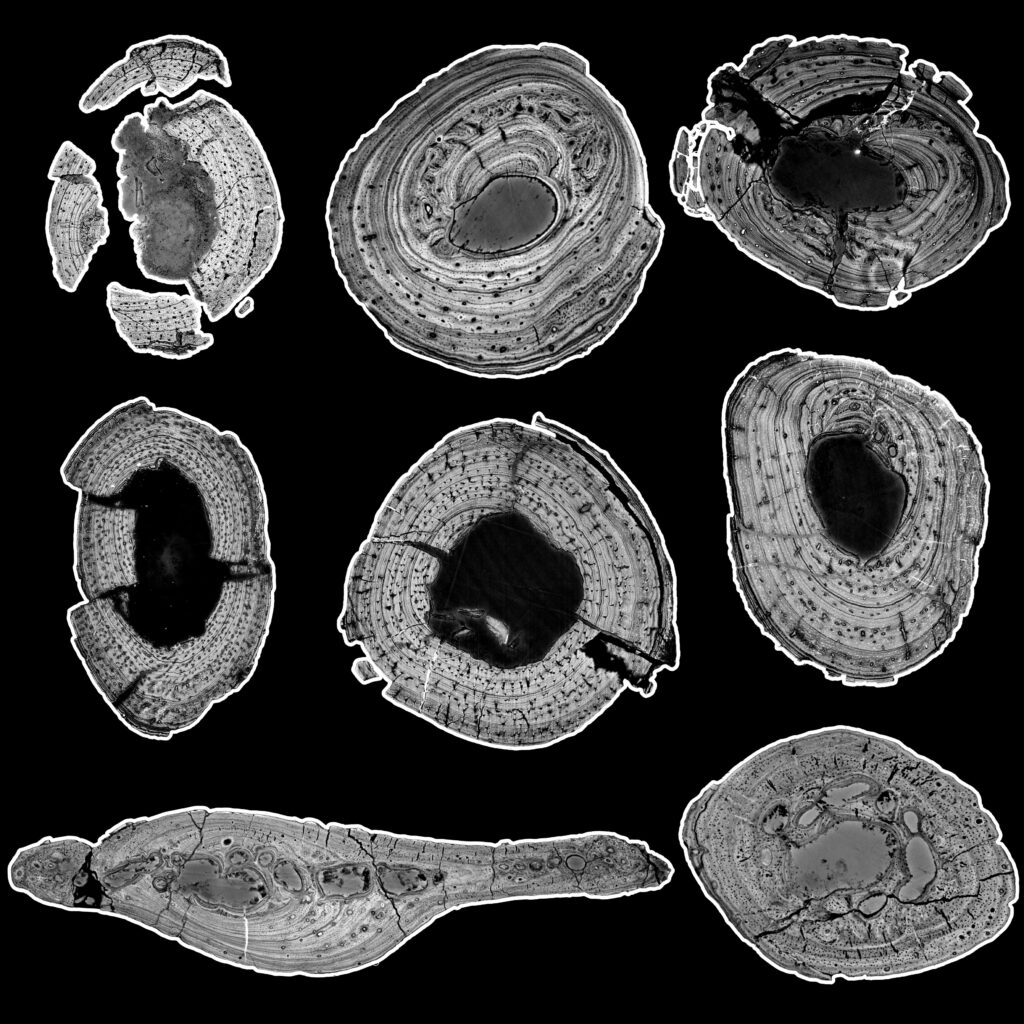SAJS outstanding article award for 2021 awarded to Prof Emese Bordy
GENUS’s grantee, Prof. Emese M. Bordy (UCT), has received the most outstanding peer-reviewed article award for the article, ‘Darting towards Storm Shelter: A minute dinosaur trackway from southern Africa’, by SAJS in 2021. The article discusses the discovery of the very small, functionally tridactyl tracks found near Storm Shelter (Eastern Cape) and the subsequent expansion of the Early Jurassic vertebrate track record of southern Gondwana. This research highlights the importance of integrating skeletal and trace fossil collections in various museums with field discoveries, for an improved understanding of the history of vertebrates in the Mesozoic.
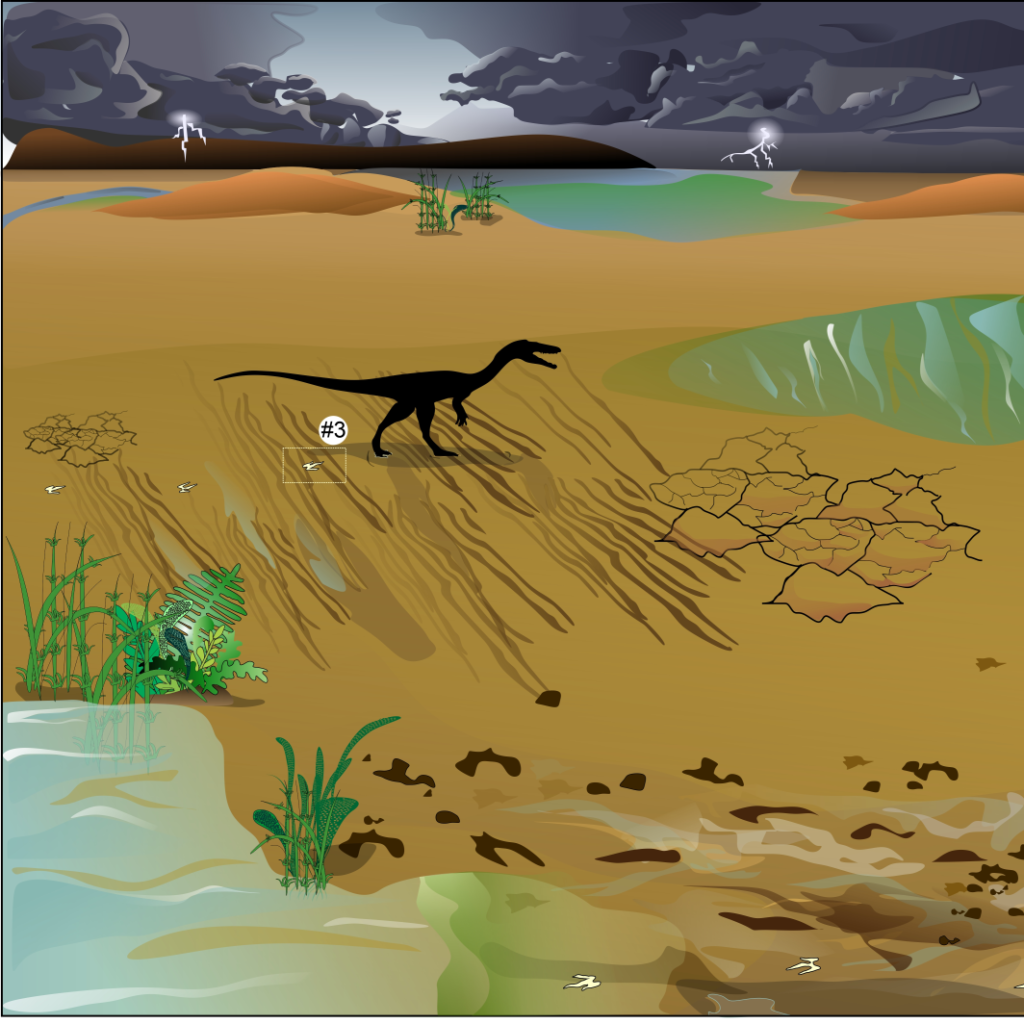
Small bites
- The newly discovered theropod tracks in South Africa include the smallest and most elongated dinosaur footprints in the Clarens Formation.
- It appears that the bipedal trackmaker dashed across the wet sediment surface at a speed of approximately 12.50km/h, its feet sinking so deeply that even the halluces facing forward were imprinted by it.
- The integration of the ichnological and osteological collections in various museums, as well as recent and past field discoveries, will be essential to interpreting the history of theropod dinosaurs in southern Africa during the Early Jurassic.
Darting towards Storm Shelter: A minute dinosaur trackway from southern Africa
The South African Journal of Science (SAJG) has awarded the Outstanding Article Award to Emese M. Bordy, Associate Professor at the Department of Geological Sciences of the University of Cape Town. The article, ‘Darting towards Storm Shelter: A minute dinosaur trackway from southern Africa’, has been presented as the most outstanding peer-reviewed article in SAJS in 2021.
The article discusses the discovery of the very small, functionally tridactyl tracks found near Storm Shelter (Eastern Cape) in South Africa. The footprints likely belong to theropod dinosaurs, the primary terrestrial carnivores during the Jurassic and Cretaceous. One explanation for the dominance of these animals in the Mesozoic is the effects of changing body size, especially across the Triassic–Jurassic boundary. Evidence for changes in theropod body size during the dawn of the dinosaurs is increasing the importance of the southern African fossil record because a robust data set of skeletal and trace fossils are needed to qualitatively assess such temporal trends. Southern Africa’s richly fossiliferous continental rock record that formed in southern Gondwana during the Mesozoic provides a unique opportunity for such integrative investigations.
In this study, the vertebrate track record of southern Gondwana was expanded by documenting this Early Jurassic trackway of very small, functionally tridactyl tracks. The locomotor parameters (step lengths and strides) preserved in the trackway were used for estimating the trackmaker’s speed of movement and body size. Derived from the ichnological measurements and aided by digital 3D models, the article shows that these fast, highly successful predators were also able to sprint at speeds up to 12.50 km/h and that they were similar in the size to a wild turkey. Their small body size is argued to have been an advantage for adapting to an increasingly harsh desert ecosystem, prone to flash flooding and dry spells in the Early Jurassic of southern Africa. Moreover, the tracks indicate that as the bipedal trackmaker dashed across the wet sediment surface, either as a predator or prey, its small feet sunk hallux-deep into the sediment.
The articles also remind us that, in the context of the regional abundance and diversity of the fossil footprints in southern Africa, vertebrate tracks, in all shapes and sizes given, remain an important proxy for meaningfully assessing concepts on macroevolutionary changes in dinosaur body size during the early Mesozoic. We can only leverage the true potential of this rich palaeontological record by integrating the collected, but largely unknown materials in various museums as well as recent discoveries like this one made at the Storm Shelter with the global story of early Mesozoic ichnological and osteological remains.
